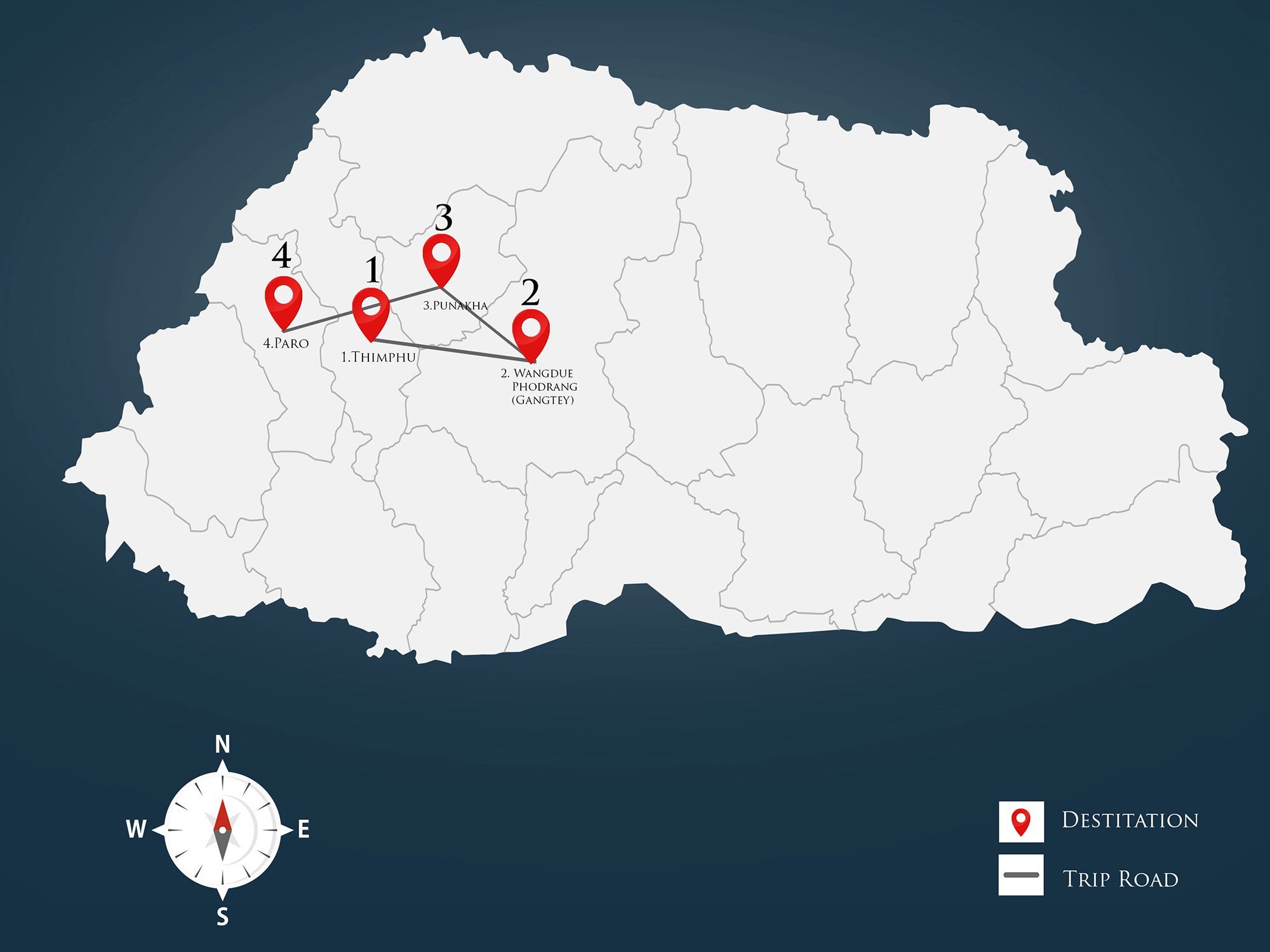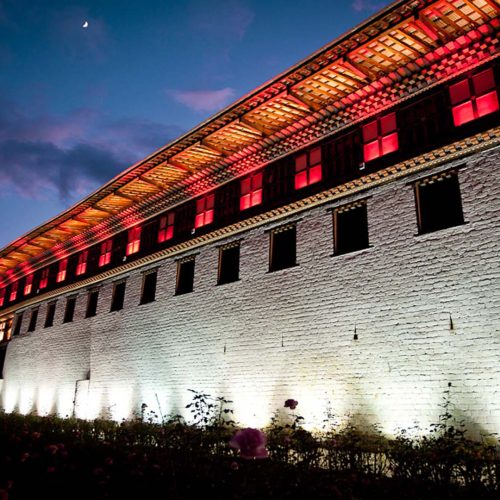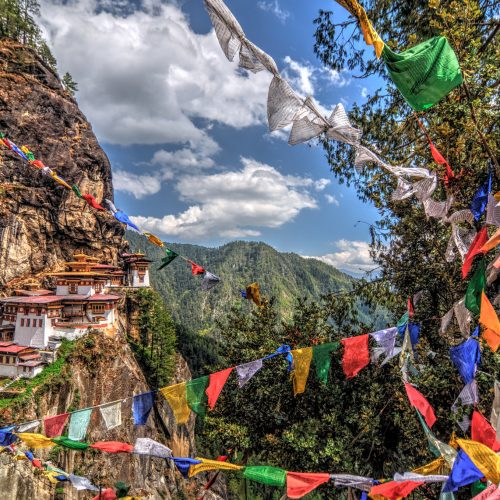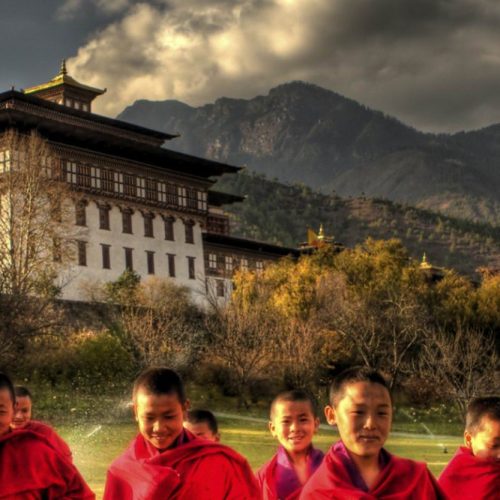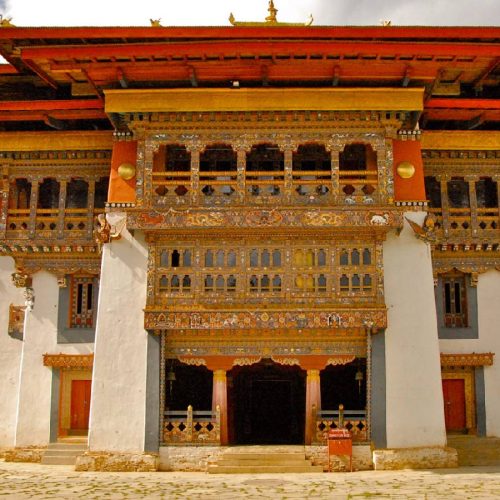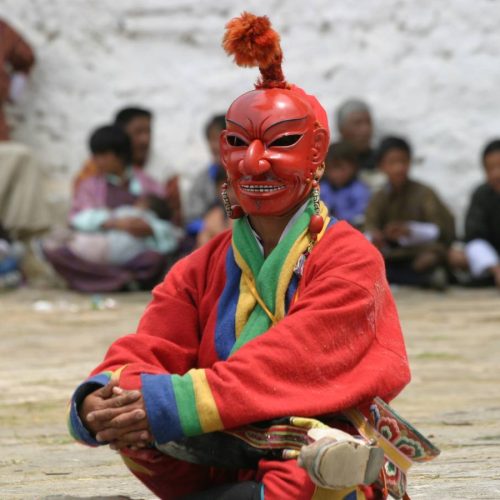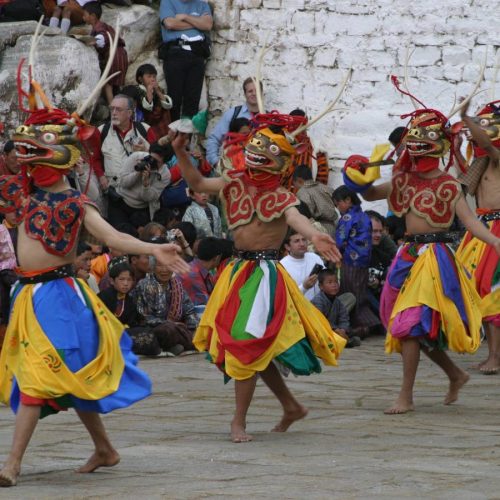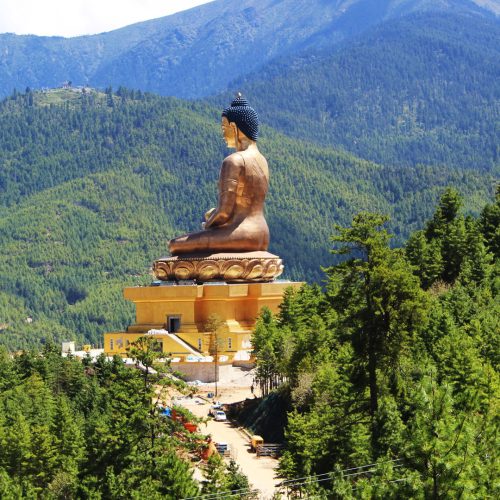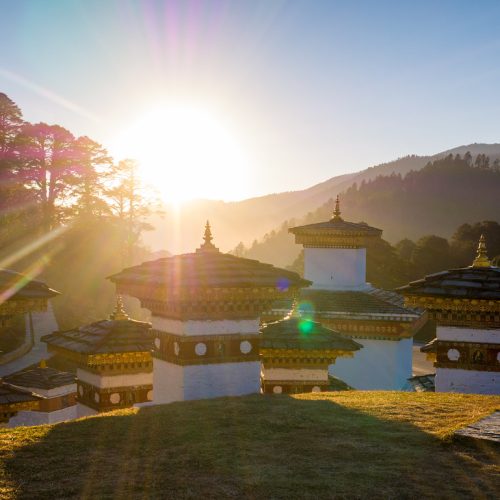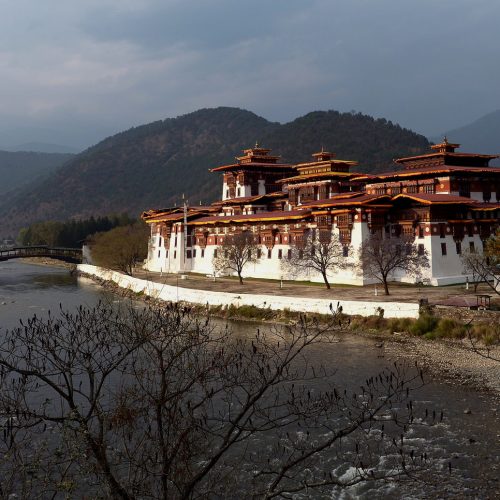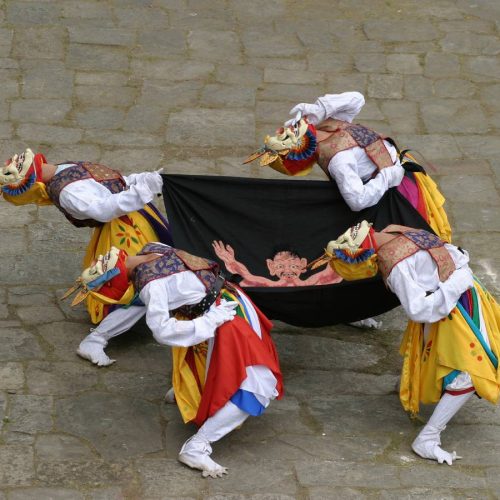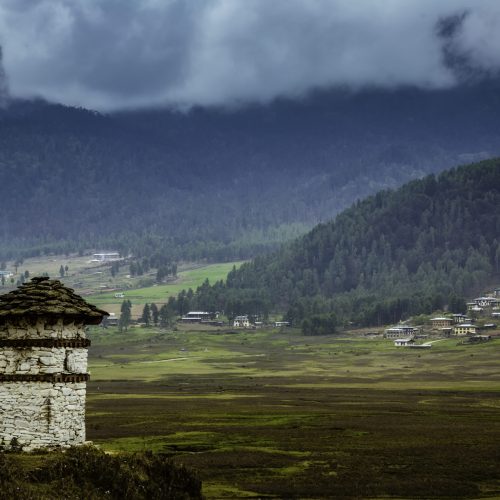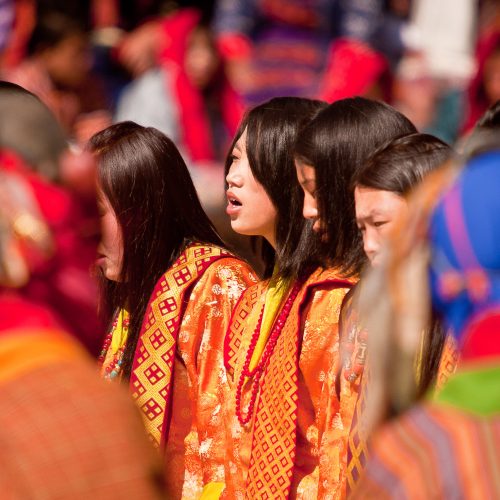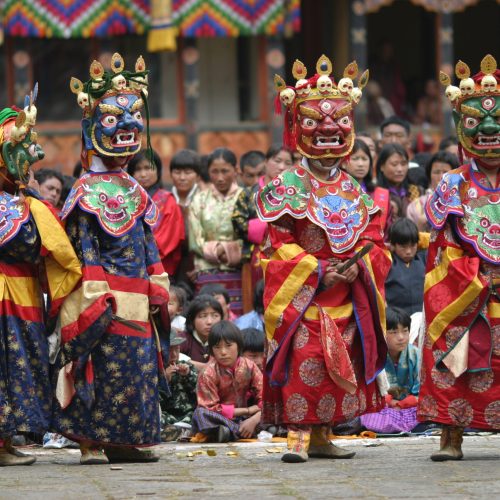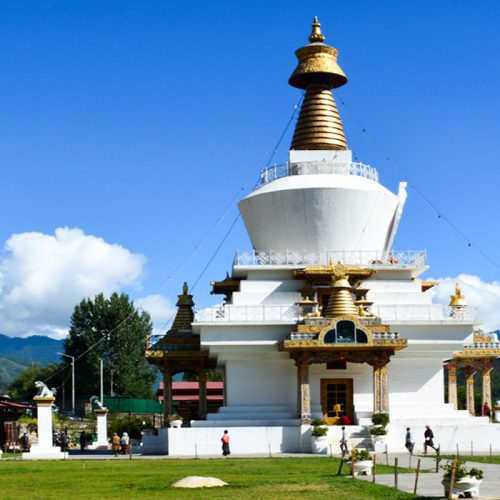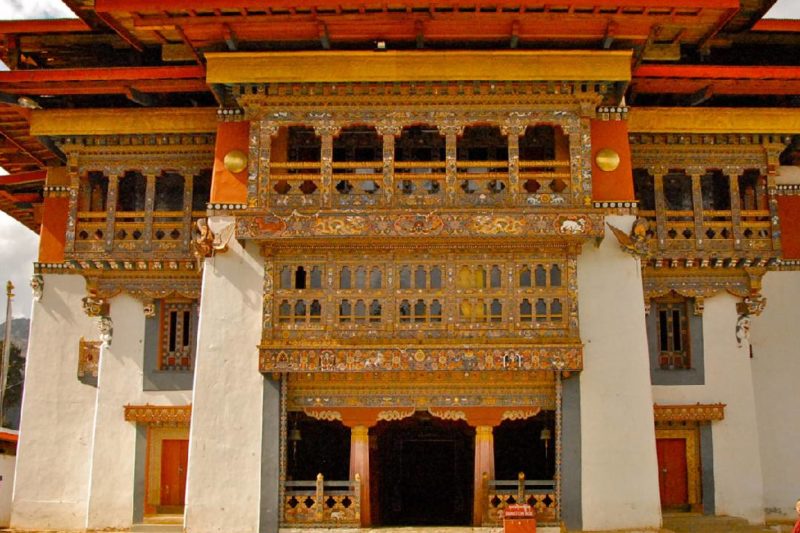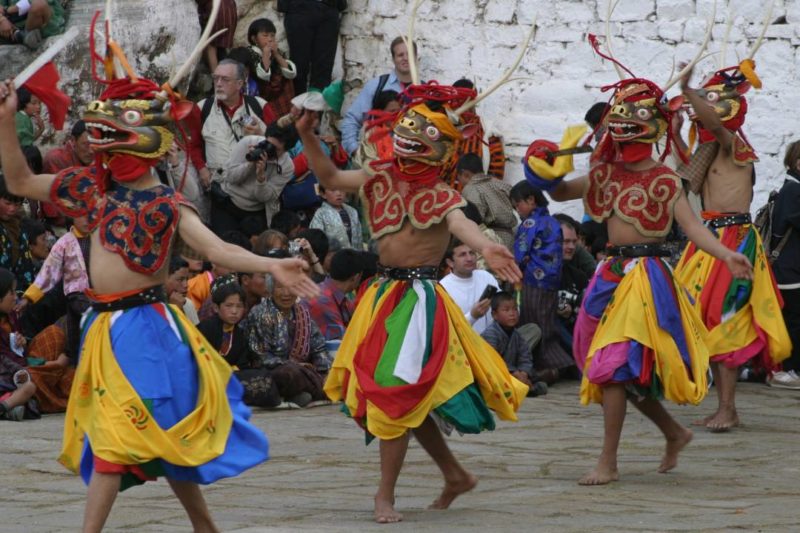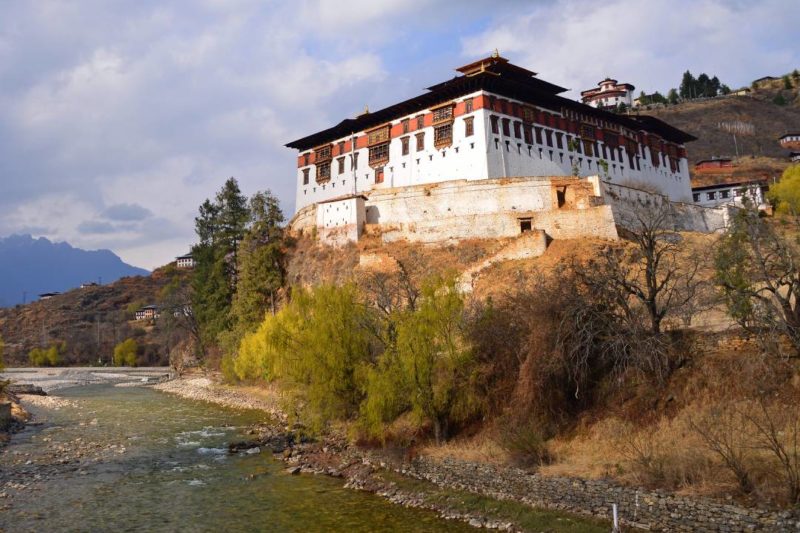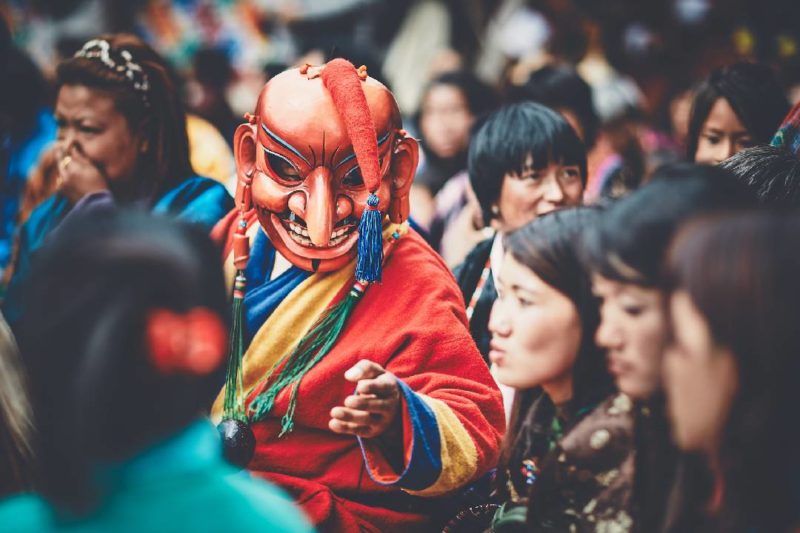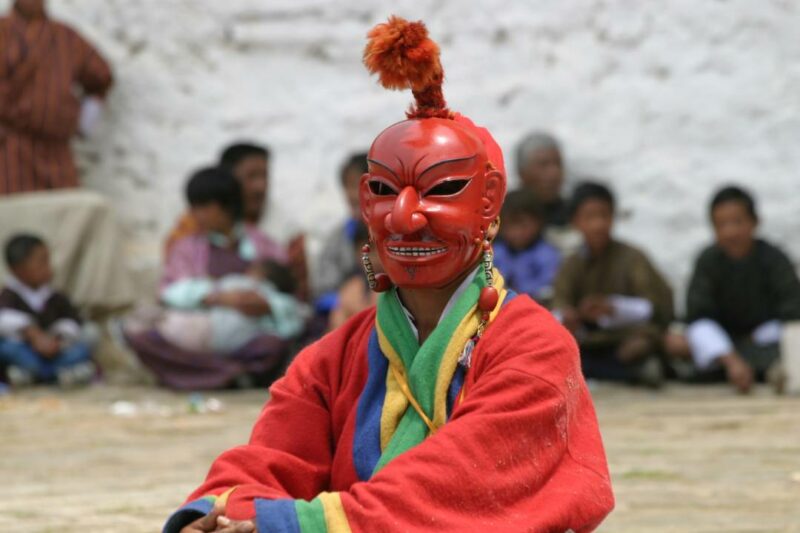Punakha Tshechu (festival), celebrated from March 12 to March 14, 2022, is one of the largest events in Bhutan. Experience the spectacular Punakha Tsechu (Festival), held in the grounds of the magnificent Punakha Dzong. A Tsechu is a Buddhist festival in honour of Guru Rimpoche, the saint who brought Buddhism to Bhutan. Locals gather in a spirit of festivity, celebration and deep faith to witness unique masked dances performed by monks, cladded in colorful brocade attire and permeate chants and reading of Buddhist scripts.. The Tsechu is one of the best ways to experience the ancient living culture of Bhutan. Highlights in this tour includes Punakha Dzong, “Palace of Great Happiness” and Paro Rinpung Dzong, “Fortress of The Heap of Jewels” finest examples of Bhutan’s unique architecture. An unforgettable experience and hike to Taktsang- The Tiger’s Nest. The Phobjikha Valley is one of the most beautiful destinations in Bhutan, a Unesco World Heritage Site. It is the winter home to a group of globally endangered black necked cranes that arrive every year from the Tibetan Plateau. Explore the vibrant atmosphere and daily hustle and bustle of Thimphu and Paro town while also experiencing spectacular views of the Himalayan range, its snowy peaks and the lush green forests Bhutan has to offer.
Altitude in Paro: 2,280m
Altitude in Thimphu: 2,320m
Distance: 55km
Estimated travel time: 1.30hr
Onboard the aircraft, the flight is treated to spectacular views of snow peaked mountains and the Himalayan ranges. Paro airport (2,280m) is Bhutan’s only international airport where our dedicated team will then take you to the capital city Thimphu, an estimated one-and-a-half-hour drive of 55km.
Tachogang Lhakhang –This ancient temple was built by Thangtong Gyalpo, the Bhutanese legendary iron bridge builder. The story goes that Thangtong Gyalpo was inspired by the vision of the spiritual horse Balaha (an emanation of Chenrizig Avalokiteshvara) when he was meditating at the very same spot of the temple.
National Memorial Chorten – one of Bhutan’s most prominent buildings. The Chorten is the monument of world peace and prosperity. For Bhutanese, the site also serves as the memorial to their Third King, His Majesty Jigme Dorji Wangchuck (1928-72).
Buddha Point (Buddha Dordenma) - At a height of 51,5m, placed on top of a hill in Kuenselphodrang Nature Park, the sight of the enormous statue of Shakyamuni Buddha is stunning and unforgettable. This giant statue is one of the largest in the world and is said to emanate an aura of peace and happiness.
Exploring the nooks and crannies of Thimphu city. Walk the streets of the capital, live the commotion, and experience the nightlife with good food and music.
Altitude in Thimphu: 2,320m
Hike to Cheri Goemba – the first monastery of Bhutan (2,800m), established in 1620. The ancient monastery was founded by Ngawang Namgyal, the founder of Bhutan. An hour of hiking through forests of blue pine, fir, and rhododendron trees.
Folk Heritage Museum- get an insight into rural Bhutanese life and art.
National Textile MuseumThe heritage museum replicates a rural house in the mid-19th century, using rammed mud timber, presenting objects like the leopard-skin bags and Brokpa yak-hair ‘spider’ hats. The art of Thagzo (weaving) with different styles and on a variety of materials will also be presented.
National Institute for Zorig Chusum (The Arts and Crafts School or Painting school)- The students here are enrolled in a different course that teaches the 13 traditional arts of Bhutan.
Tashicho Dzong (Fortress of The Glorious Religion)- Tashichho Dzong has been the seat of the Bhutan government since 1952. Through the years, the dzong has gone through expansions and renovation and presently houses the throne room and offices of the king, the secretariat and the ministries of home affairs and finance. Other government departments are housed in buildings nearby.
Exploring the nooks and crannies of Thimphu city. Walk the streets of the capital, live the commotion, and experience the nightlife with good food and music.
Altitude in Gangtey: 2,900m
Distance: 160km
Estimated travel time: 6hrs
Dochula Pass (3,050m)- Panoramic view of the Himalayan mountains. The pass is a popular location among tourists as it offers a stunning 360 degree panoramic view of the Himalayan mountain range. The view is especially scenic on clear, winter days with snowcapped mountains forming a majestic backdrop to the tranquility of the 108 chortens gracing the mountain pass.
Gangtey Goemba or ‘Gangtey monastery’- The only Nyingmapa monastery in this region, sitting on the crest of a hill on top of Gangtey valley. The monastery was built in 1613 following the prophecy of Pema Lingpa – the famous 15th-century treasure finder.
Cycling or hiking in the valley as well as watching the cranes during the winter months.
Altitude in Punakha: 1,300m
Distance: 87km
Estimated travel time: 3hrs
Gangtey Nature Trail – A scenic trail of the Phobjikha Valley, a Unesco World Heritage Site.
A popular trail leading to a small hilltop overlooking Gangtey Goemba to lovely flower meadows and into Semchubara village. The trail continues through pristine forests of blue pine to the valley viewpoint where the trail ends at the Khewang temple.
Chimi Lhakhang- Hike to the Temple of Fertility (altitude: 1,500m). An enjoyable hike, taking about 30 minutes through the rice and mustard fields and the uniquely decorated houses of Lobasa Village.
Khamsum Yulley Namgyal Chorten (1,500m)- A leisure 1 hour hike to witness Bhutan’s finest example of tradition and architecture. A unique attribute of this Chorten setting it apart from the rest is in its architecture- designed on the principals delineate within the Holy Scriptures instead of trendy engineering manuals. The golden spire and labyrinthine wall patterns square measure fine example of art and traditions.
Altitude in Punakha: 1,300m
Today is the highlight of the whole journey as we will join in the renowned Punakha Tshechu, held at Punakha Dzong.
Punakha Tshechu is one of the most celebrated Tshechus in Bhutan. It is dedicated to honoring Guru Rinpoche (or Padmasambhava), the great master who is credited with having brought Tantric Buddhism to the Himalayas. Punakha festival was introduced in 2005 by Ministry of Home & Culture Affairs as per request made by Punakha district Administration and local people to preserve Buddhist teachings and to keep alive the noble deeds of Zhabdrung Ngwang Namgyal, the unifier of Bhutan. Witness sacred dances and rituals performed by monks and laymen cladded in colorful brocade attire and permeated by chants and reading of Buddhist scripts. Join in with locals in a special occasion of celebration, blessings and socialising.
Punakha Dzong (Palace of Great Happiness)- Built-in 1637, it is said to be the most spectacular dzong in Bhutan. Punakha Dzong was built at the confluence of two major rivers in Bhutan, the Pho Chhu and Mo Chhu, which converge in this valley.
In addition to its structural beauty, until the mid-1950s, it still served as Bhutan’s capital and the seat of the government. All of Bhutan’s kings have been crowned here, and it has witnessed the memorable wedding of the King of Bhutan, Jigme Khesar Namgyel Wangchuck to Jetsun Pema in 2011.
Pho Chhu Suspension Bridge- Measuring at 160m in length, this is Bhutan’s longest suspension bridge. Spectacular sight of Punakha Dzong and Pho Chhu Valley.
Altitude in Paro: 2,280m
Distance: 125km
Estimated travel time: 4hrs
Paro Rinpung Dzong (Fortress of The Heap of Jewels)- Rinpung Dzong is an ancient fortress in traditional Bhutanese architecture with a complex of courtyards, temples, administration offices and open space surrounded by towering walls. All the buildings are equipped with huge windows with elaborate wooden carvings of traditional Bhutanese motifs. Paro Dzong is considered one of the finest examples of Bhutanese architecture and it’s one of the top tourist attractions in Bhutan. This impressive dzong is also seen during landing into Paro Airport.
National Museum of Bhutan – Ta Dzong. Originally built as a watchtower in 1649, atop a hill above the Rinpung Dzong, overlooking the whole picturesque Paro valley. Converted into a museum in 1968, its extensive collection includes astonishing antique thangka paintings, weapons and armor, and rich diversity of natural and historic artifacts.
Drukgyel Dzong- Unlike other Dzongs built by Zhabdrung Ngawang Namgyal and his successors, Drukgyel Dzong was served solely for defensive purpose without administrative and religious functions, especially against external threats from the border. The Dzong had housed the best armoury in the country at the time. As the name of the Dzong indicates (Druk is the local name for Bhutan, while Gyel means victory), it is said that it was built to commemorate Bhutanese victory over the combined forces of Tibetan and Mongolian army, which attempted several invasions to the country. In fine weather the towering peak of the sacred Mount Jomolhari (7314m) appears as a stunning backdrop.
A stroll through Paro town.
Altitude in Paro: 2,280m
Taktsang Monastery, or the Tiger’s Nest (highest altitude: 3,120m)- A 4.5 km hike that will typically take 5-6 hours ascending around 600m to reach the destination. An experience through dense enchanted forests and spectacular mountain scenery along the trail.
Kyichu Lhakhang- one of the 108 temples built throughout the Himalayas by the Tibetan King Songtsen Gampo in the 7th century. The main chapel has roots as far back as the 7th century, with additional buildings and a golden roof added in 1839 by the penlop (governor) of Paro and the 25th Je Khenpo. Elderly pilgrims constantly shuffle around the temple spinning its many prayer wheels, making this one of the most charming spots in the Paro valley.
Traditional meal at a farmhouse learning about Bhutanese daily life. A traditional hot stone bath at the farmhouse after all the hiking is also an option provided for relaxation.
A stroll through Paro town.

